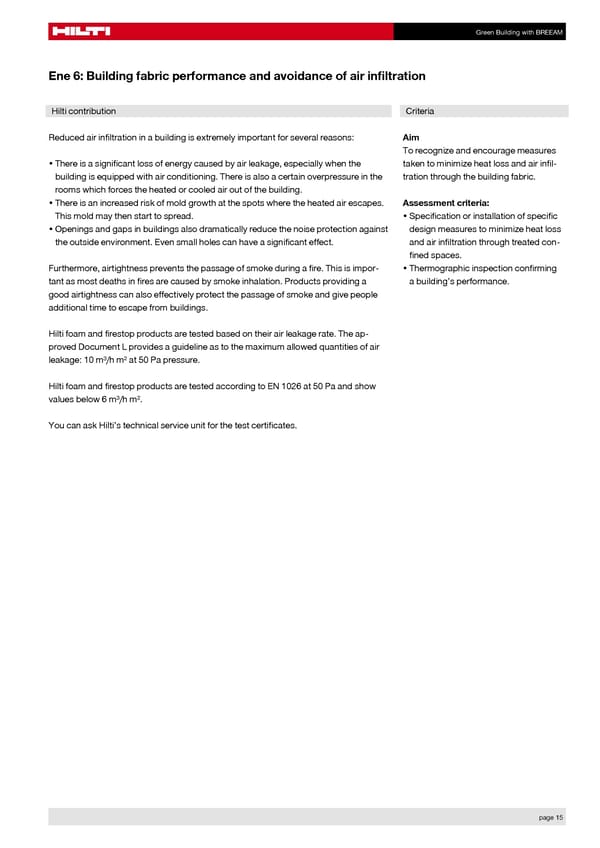Green Building with BREEAM Ene 6: Building fabric performance and avoidance of air infiltration Hilti contribution Criteria Reduced air infiltration in a building is extremely important for several reasons: Aim To recognize and encourage measures • There is a significant loss of energy caused by air leakage, especially when the taken to minimize heat loss and air infil- building is equipped with air conditioning. There is also a certain overpressure in the tration through the building fabric. rooms which forces the heated or cooled air out of the building. • There is an increased risk of mold growth at the spots where the heated air escapes. Assessment criteria: This mold may then start to spread. • Specification or installation of specific • Openings and gaps in buildings also dramatically reduce the noise protection against design measures to minimize heat loss the outside environment. Even small holes can have a significant effect. and air infiltration through treated con- fined spaces. Furthermore, airtightness prevents the passage of smoke during a fire. This is impor- • Thermographic inspection confirming tant as most deaths in fires are caused by smoke inhalation. Products providing a a building’s performance. good airtightness can also effectively protect the passage of smoke and give people additional time to escape from buildings. Hilti foam and firestop products are tested based on their air leakage rate. The ap- proved Document L provides a guideline as to the maximum allowed quantities of air leakage: 10 m³/h m² at 50 Pa pressure. Hilti foam and firestop products are tested according to EN 1026 at 50 Pa and show values below 6 m³/h m². You can ask Hilti’s technical service unit for the test certificates. page 15
 Green Building with BREEAM Page 14 Page 16
Green Building with BREEAM Page 14 Page 16